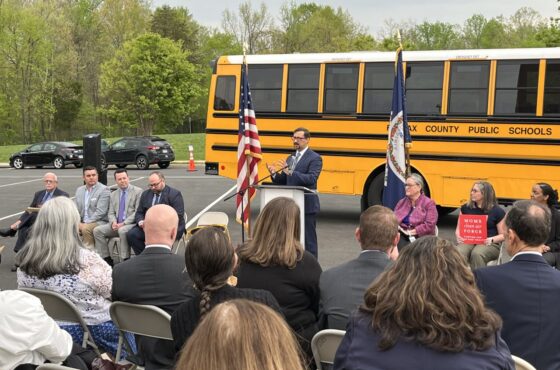In a Harsh World, a Safe Haven
Published by the Natural Resources Defense Fund
America has always been a place of refuge for the desperate. But as the planet changes, the definition of “refugee” is changing along with it.

Women and children wait outside an aid distribution center in Dadaab, Kenya
Riyaad Minty/Flickr
In some countries, the convergence of climate change, economic desperation, and internal conflict have made life so unbearable that flight is properly seen as the only reasonable response. The African nation of Somalia falls into this category. Ravaged for more than a quarter century by a bloody civil war whose end is nowhere in sight, it has also had to endure epic waves of drought and famine that in 2011 killed an estimated 260,000 Somalis—half of them under the age of five. Today, the largest refugee camp in the world, a makeshift city in neighboring Kenya known as Dadaab, is home to half a million Somalis who have managed to escape with their lives, but with little else.
Somalia also happens to be one of the seven Muslim-majority countries singled out by President Donald Trump last week in an executive order barring refugees or migrants from any of these nations from entering the United States. Immediately after the order went into effect, chaos ensued and mass protests erupted as hundreds of peaceful, law-abiding people—including permanent residents of the United States, many of them families with young children—were detained at airports and informed that they were no longer welcome inside our borders.
While the legality of President Trump’s executive order is still being debated, there can be very little debate about its morality. As many have already noted, this ban—despite what the President and his advisers continue to maintain—is fundamentally anti-American. Ostracizing people based on their religion, ethnicity, or nationality runs completely counter to the worthy vision of our country’s founders. It’s repellent and wrongheaded.
And when combined with the human tragedy of climate change, it’s a recipe for disaster—on a global scale.
Refugees come in various forms. Some are fleeing countries that have been ripped apart by war and conflict. Others are escaping political or religious persecution. Still others are compelled to leave their homes in search of economic opportunities that—however meager they may be—will at least allow them to provide for their families and give their children a shot at a decent life.
Increasingly, however, we’re witnessing the emergence of a new type: the climate refugee. According to the United Nations High Commissioner for Refugees, an average of 21.5 million people per year have been “forcibly displaced by weather-related sudden-onset hazards—such as floods, storms, wildfire, [and] extreme temperature—since 2008.” And while there is significant fluctuation from year to year in the total number of people displaced, the Internal Displacement Monitoring Centre, which collects information on refugee activity worldwide, notes that “the trend over decades is on the rise.”

From left: A girl bathes in contaminated floodwater in Satkhira, Bangladesh; children navigate floodwaters in Dhaka, Bangladesh
From left: DFID/Rafiqur Rahman Raqu; Amio James Ascension
Some countries get hit harder than others. In Bangladesh, for example, river erosion and flooding have resulted in 200,000 cases of displacement every year. And in the tiny South Pacific islands of Kiribati and Tuvalu, the increased prevalence and intensity of natural disasters has forced 1 person in 10 to migrate. In these countries, climate change isn’t something to be debated by politicians or defended by scientists. It’s something that’s acknowledged by every citizen as an immediate, existential threat.

Dadaab refugee camp, Kenya
European Union/ECHO/Anouk Delafortrie
Since 1991, when Somalia’s civil war erupted, the United States has received an estimated 150,000 of that country’s refugees. But now President Trump wants to close our doors on them and others who are escaping conditions that most Americans recognize only from the dystopian fiction we like to consume as entertainment.
For too many people in the most troubled parts of the world, real life is the stuff of dystopian fiction. And as climate change worsens—accelerated, very possibly, by the reckless policies of the Trump administration and his oil-soaked, science-denying cabinet appointments—more and more people from points all around the globe are going to see their everyday realities turn into waking nightmares.
As Americans, we owe the world climate policies that will curb, rather than exacerbate, global warming, a well-known driver of the misery that creates refugee crises in the first place. We owe them our national legacy of compassion and acceptance. And while we’re at it, we owe ourselves—and our children—the assurance that we will live up to our most cherished ideals, not jettison them in a spasm of fear.
Read the full article at: https://www.nrdc.org/experts/rhea-suh/harsh-world-safe-haven



